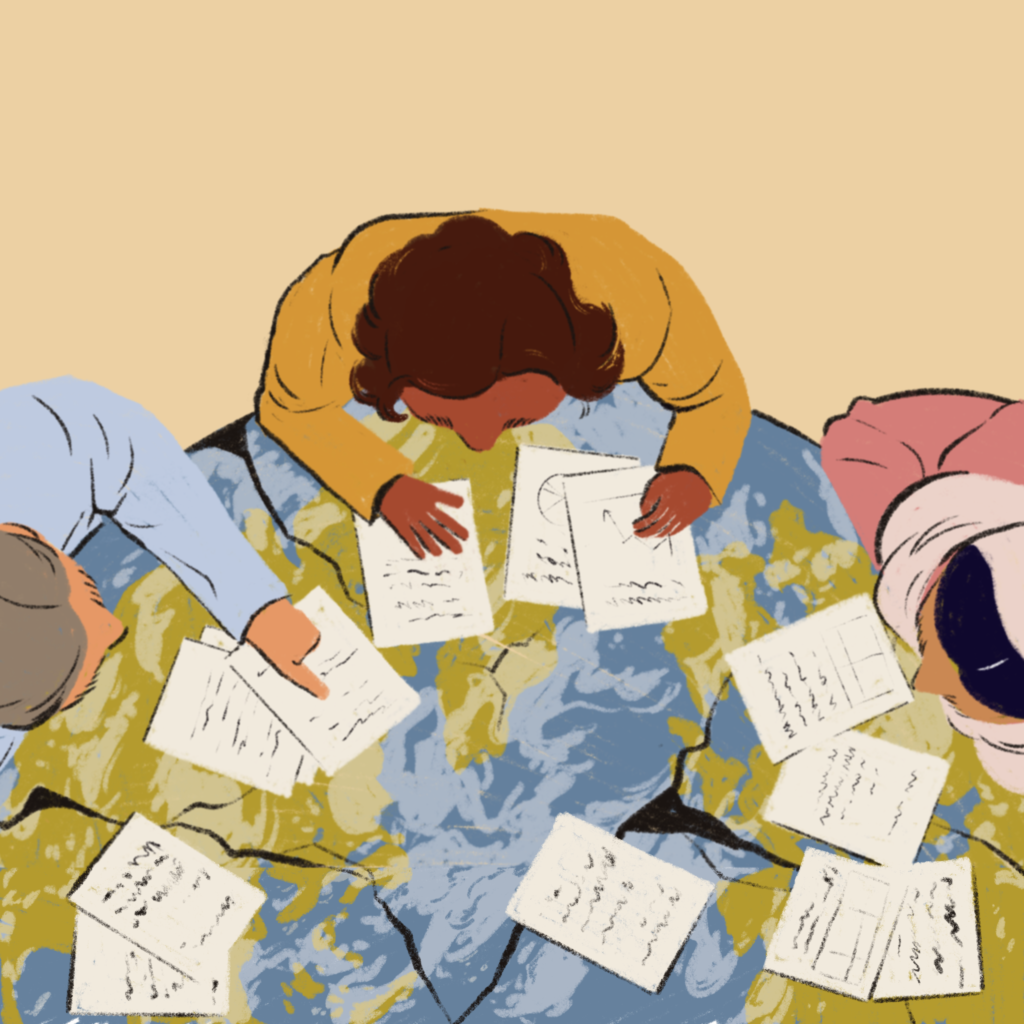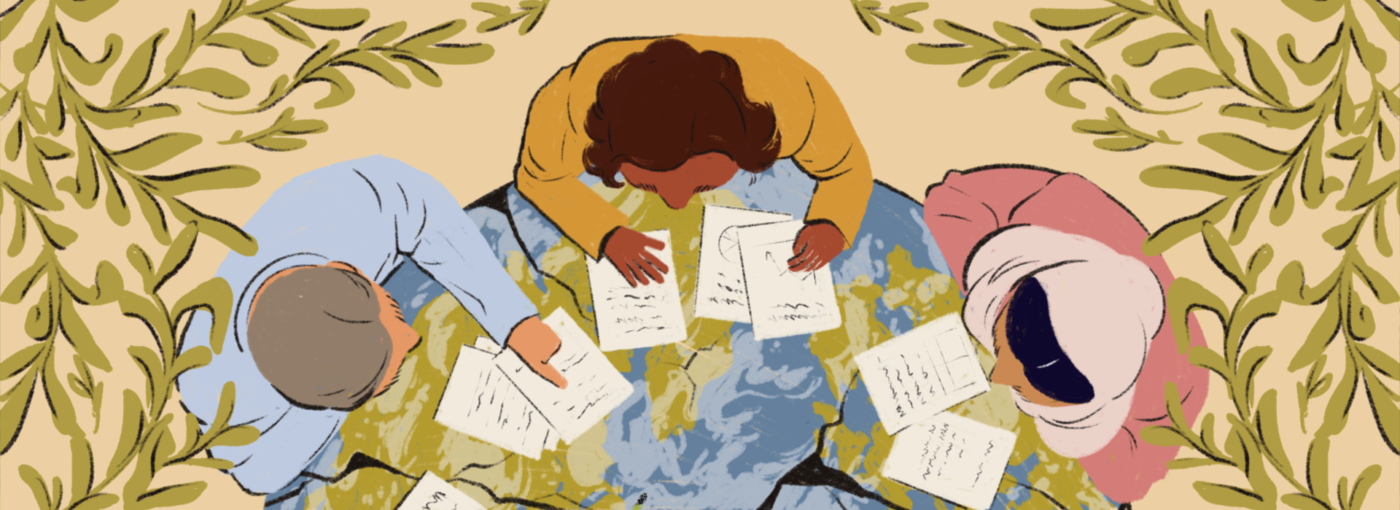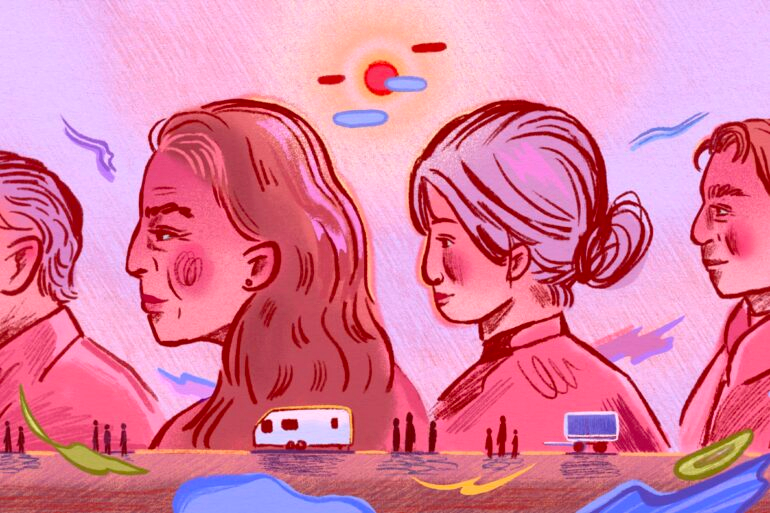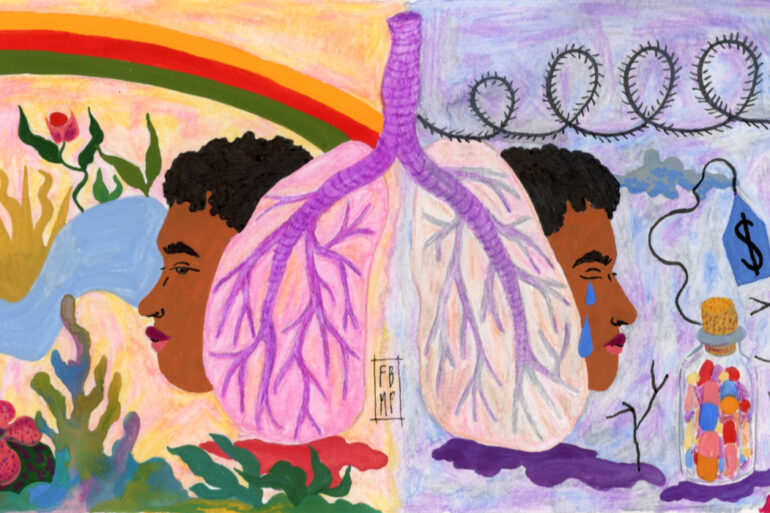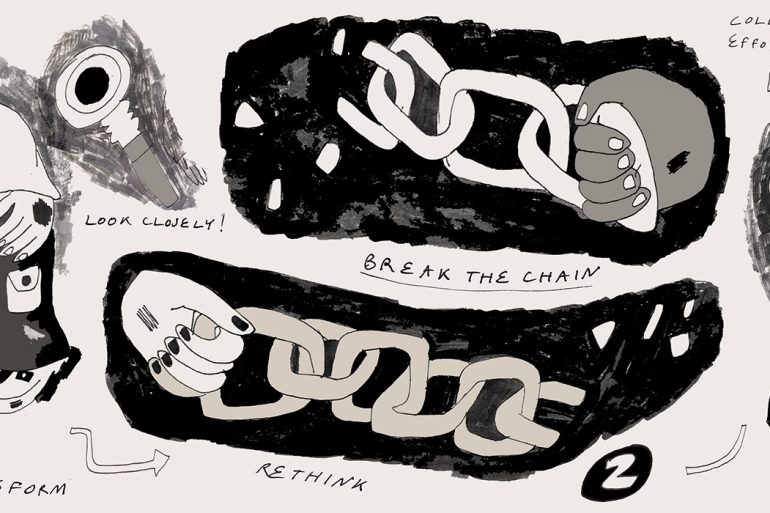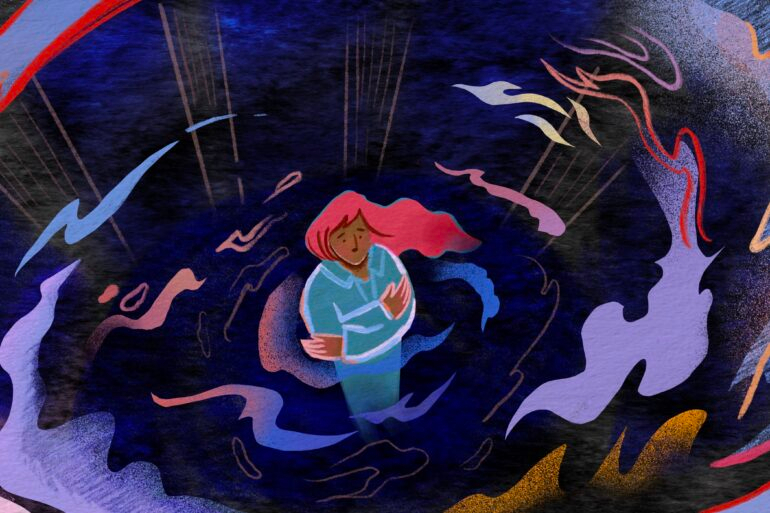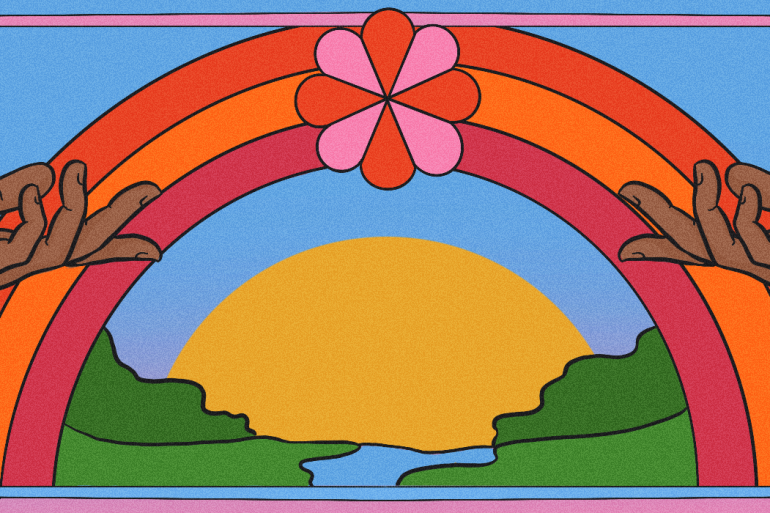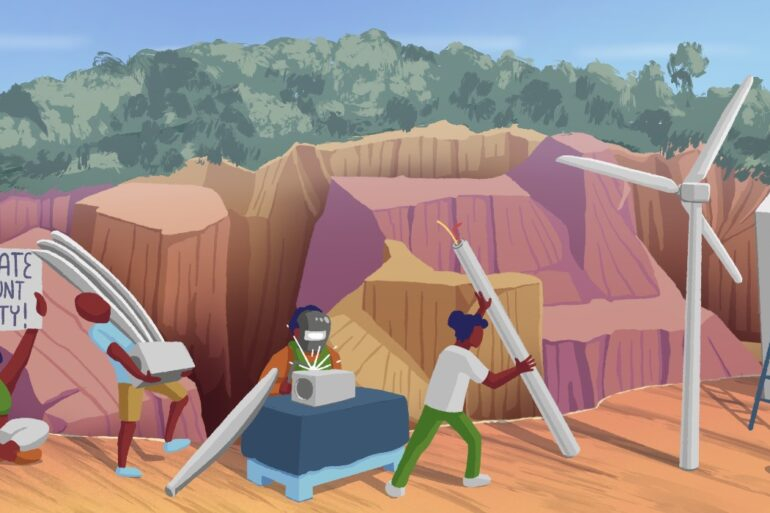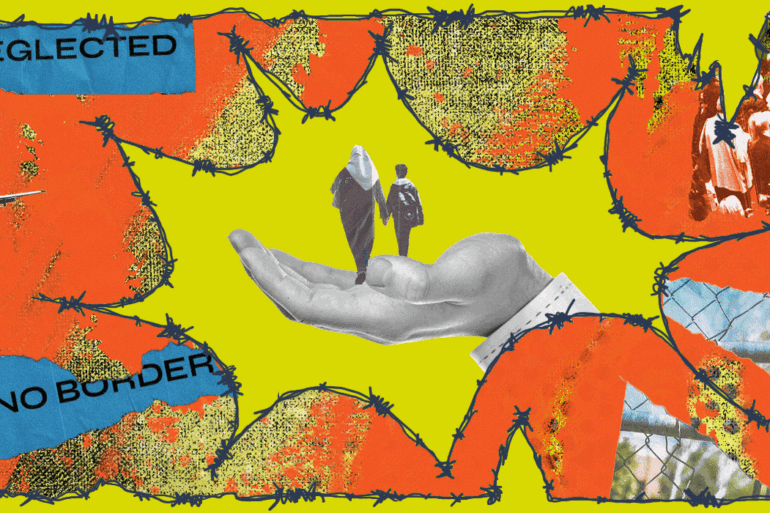What is the Green New Deal?
In short, the Green New Deal means a fundamental transformation of the economy to protect the planet while reducing inequality and improving the lives of ordinary people.
In practice, it means large-scale investment in cheap, publicly-owned renewable energy, in green infrastructure such as affordable public transport, and insulating buildings to bring down bills and reduce emissions.
It also means creating decently-paid, unionised green jobs, and guaranteeing good alternative jobs for workers currently employed in highly polluting industries. Farmers would be supported to adopt sustainable agricultural practices, through training and subsidies.
Importantly, this policy would be funded by taxing those who contribute to climate change the most: the rich and big business.
How did it emerge?
The phrase “Green New Deal” was first used in a 2007 New York Times article by journalist Thomas Friedman. The following year in the UK, a report titled “A Green New Deal” was published by the New Economics Foundation, and authored by figures including the Green MP Caroline Lucas and economists Ann Pettifor and Richard Murphy.
More recently, the idea was popularised by progressive Democrats in the United States – most notably Alexandria Ocasio-Cortez who, together with senator Ed Markey, put forward a proposal to speed up climate action and ensure a just transition. Since their Green New Deal resolution was first introduced in Congress in 2019, the slogan was taken up by climate activists around the globe.
The name of the policy is a reference to the New Deal, a series of reforms introduced by Franklin D Roosevelt in the 1930s to help the US recover from the Great Depression. It included huge programmes of job creation to address unemployment, investment in social security, raising wages and strengthening workers’ rights to unionise. This approach not only helped kick-start the economy after the recession, but improved the lives of working class people for decades to come.
Proponents of the Green New Deal argue that to address the climate emergency, we need at least a similar scale of ambition. Our planet is at breaking point and small tweaks won’t save it. We need transformative change, taking on the vested interests of big polluters and improving the lives of ordinary people in the process.
Because the history of the New Deal is less familiar in the UK, alternative terms have been suggested, such as “Green Industrial Revolution.” However, the phrase “Green New Deal” is still popular with campaigners in the UK and beyond.
Why is it needed?
For years, scientists have warned that we’re running out of time to prevent irreversible, runaway climate chaos. 2030 is often quoted as the deadline to bring down emissions to avoid disaster.
But the truth is that any such dates and targets are arbitrary. The climate crisis is already here, causing disasters such as the 2022 floods in Pakistan, which affected 33 million people, or deadly droughts in the Horn of Africa. In Europe, unprecedented heatwaves are also killing thousands of people, as well as destroying crops and pushing up food prices. We need action now.
Meanwhile, economic inequality is soaring. In the UK, the wealth of billionaires has increased by over 1000% since 1990. Globally, the richest 1% have pocketed nearly two-thirds of all new wealth since 2020.
For too long, we were told that individual lifestyle changes are the answer to climate change. It’s now very clear that this approach isn’t working, and can’t work.
At its core, the climate crisis is a class issue. The world’s richest 1% are responsible for more than twice as many CO2 emissions as the poorest 50% of humanity. A report in 2017 revealed that only 100 companies were responsible for more than 70% of greenhouse gas emissions since 1988. The change we need is systemic.
The good news is that climate action doesn’t have to mean austerity and forcing working class people to give up all of the comforts they enjoy. What’s beneficial for the planet is often also good for ordinary people: whether that’s great quality and affordable public transport, well insulated homes or investment in green jobs. By decarbonising the economy and redistributing wealth, we can create a world that’s more liveable in every sense of the word.
Why is the Green New Deal a global issue?
Climate change doesn’t recognise borders, and efforts to address it must also be international. Every country must commit to reducing emissions, with the goal of reaching net zero as soon as possible. In addition, richer countries must support developing nations in their efforts to combat poverty without relying on burning more fossil fuels.
Unfortunately, so far this international cooperation has proven difficult. While the 2015 Paris Agreement set the goal of limiting global warming to 1.5°C, that target looks increasingly likely to be broken in the coming years. The COP27 deal includes no commitment to phasing out or even phasing down fossil fuels. In 2009, developed nations promised to spend $100 billion a year by 2020 on supporting climate action in developing countries. That pledge also was not met.
Without greater ambition and a clear plan forward, our future looks bleak. Addressing the climate crisis starts with Western countries putting their short-term self-interest aside and showing meaningful solidarity.
How could it benefit other communities, which communities are these and what responsibility does the UK have to this?
The climate crisis affects all of us, but it doesn’t impact everyone in the same way. While wealthy people in the West are able to insulate themselves from its worst effects, many communities in the Global South are already facing an existential threat.
Several islands in the Pacific could become uninhabitable within our lifetimes, displacing entire nations. Africa is warming faster than most of the world, and its dependence on agriculture makes the consequences particularly deadly. Floods in Bangladesh, droughts in Afghanistan, sandstorms in Yemen and hurricanes in Honduras are also linked to the changing climate. Not only are these countries particularly geographically vulnerable, but often (because of years of exploitation and extractivism from colonising countries) also lack the resources to protect themselves from disasters and limit their damage.
The nations and communities that suffer most from climate chaos are often the ones that have contributed the least to causing it. That’s why many people have been raising the demand for climate reparations. At COP27, governments agreed on principle to set up a loss and damage fund for the Global South. However, the details of it are yet to be seen.
A global Green New Deal must also mean welcoming climate refugees and opening safe, legal routes for everyone forcibly displaced by the changing climate.
What role do workers have in a Green New Deal?
The labour movement has a long history of campaigning to protect the environment. In Australia in the 1970s, the Builders Labourers Federation started the “green bans” movement by refusing to work on developments that they believed to be harmful. In the UK in 1976, in response to planned job cuts, workers at Lucas Aerospace wrote an alternative plan for the corporation, arguing not just against redundancies, but for their right to develop products that are socially and environmentally useful.
More recently, the Green New Deal has been championed by trade unions such as the TSSA, representing transport workers, and the Fire Brigades Union, who point out that global warming increases the risk of fires and other disasters. However, some unions have expressed concerns that rapid decarbonisation could mean job losses and poverty for their members.
Climate chaos disproportionately harms the working class. At the same time, scaling down or eliminating harmful industries should not lead to people losing their livelihoods. Workers must be guaranteed green jobs with at least equally good pay and conditions, and supported to reskill if necessary. That’s why it’s vital for a green transition to be worker-led, planned and implemented in collaboration with trade unions.
Who are the key leaders/organisations in this movement?
- Green New Deal Rising
- Green New Deal UK
- Labour for a Green New Deal
- War on Want
- Global Justice Now
- Sunrise Movement (US)
- New Economics Foundation
- Women’s Budget Group
What can you do?
Read:
- The Case for the Green New Deal by Ann Pettifor
- A Planet to Win: Why We Need a Green New Deal by Kate Aronoff
- Overheated: How Capitalism Broke the Planet–And How We Fight Back by Kate Aronoff
- This Changes Everything: Capitalism vs the Climate by Naomi Klein
- On Fire: The (Burning) Case for a Green New Deal by Naomi Klein
- Burnt: Fighting for Climate Justice, by Chris Saltmarsh
Listen:
- GND Media podcast
Knowledge pages:
